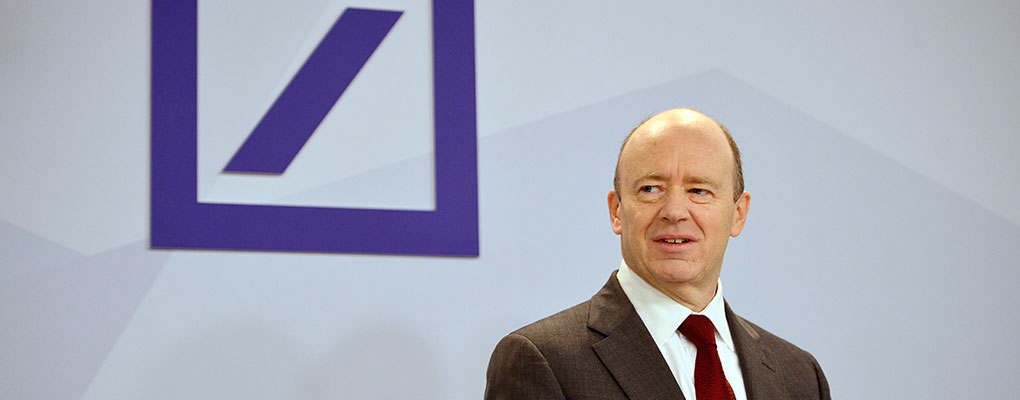
In a press release published on January 28, Germany’s biggest bank announced a €2.1bn loss for the fourth quarter of 2015 and a total net loss of €6.8bn. Deutsche Bank’s first full-year loss since the 2008 financial crisis can be attributed to restructuring and severance costs, in addition to the mounting legal fees it faced in 2015 amid a tumultuous financial climate.
“In 2015 we made considerable progress on the implementation of our strategy. The much-needed decisions we took in the second half of the year contributed to a net loss for the fourth quarter and full year”, said Co-Chief Executive Officer John Cryan in the press release.
Cryan added, “We know that periods of restructuring can be challenging. However, I’m confident that by continuing to implement our strategy in a disciplined manner, we can and will transform Deutsche Bank into a stronger, more efficient and better-run institution.”
Since joining Deutsche Bank last July, Cryan has implemented a strategy to boost capital levels and profitability by reducing the company’s debt-trading arm, as well as selling its retail business, Deutsche Postbank. The cost of doing so has weighed heavy on the bank, as severance packages amounted to €800m in Q4 2015. What’s more, Deutsche Bank lost a further €100m when Postbank was sold for 60 percent less than the value stated on its books as a result of market pressures.
In addition to splitting the firm’s investment branch into two, Cryan also abolished the bank’s Group Executive Committee, together with 10 other management committees, as part of the organisational restructuring.
In 2015, Deutsche Bank was accused of rigging benchmark interest rates as part of a global shakedown on Libor rate rigging. So even as the bank’s drastic overhaul took place, its litigation costs reached €1.2bn for the last quarter, bringing the total up to €5.2bn for the year.
While there have been heavy losses for Deutsche Bank over the past year, Cryan’s aim to streamline the organisation and cut unnecessary expenses could prove successful in a global financial market that is still reeling from the calamity of 2008. As such, it would seem that Cryan is making the bank and its organisation more robust than ever before in order to withstand the pressures ahead – something that evidently involves some sacrifices in the process.


